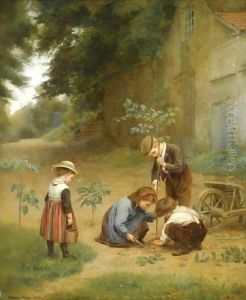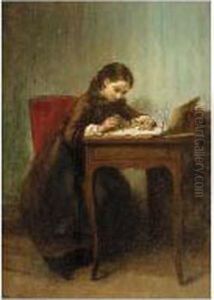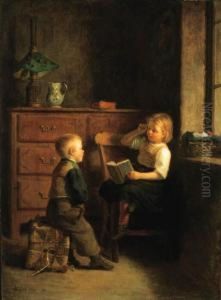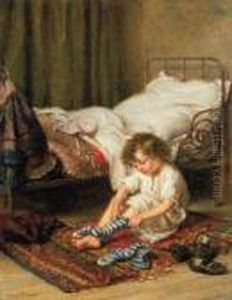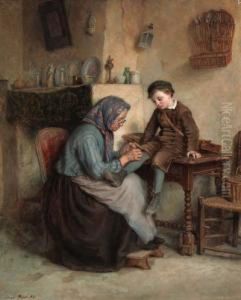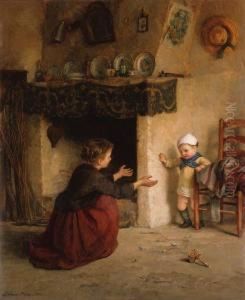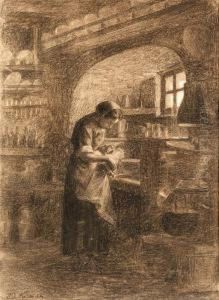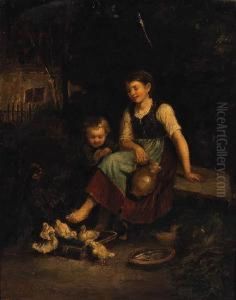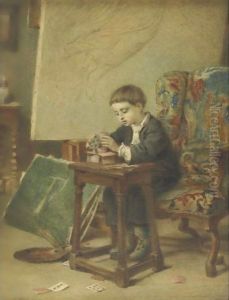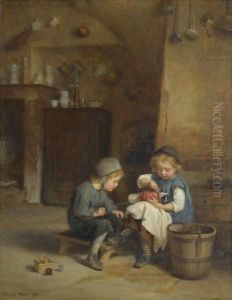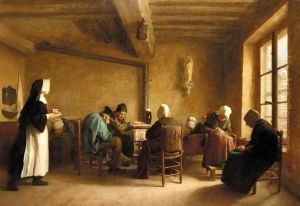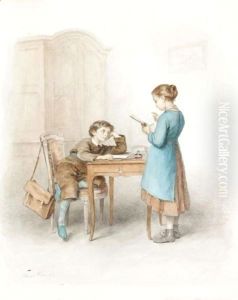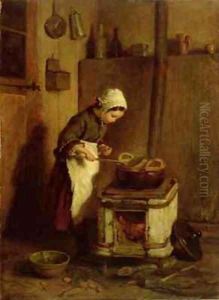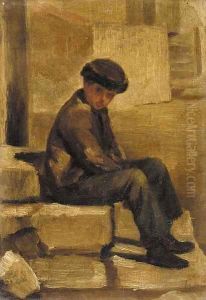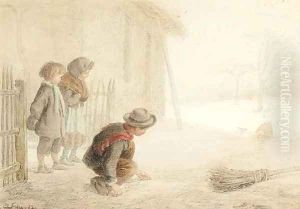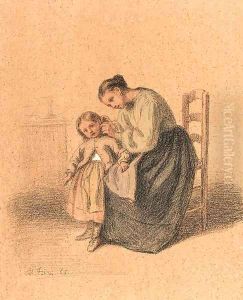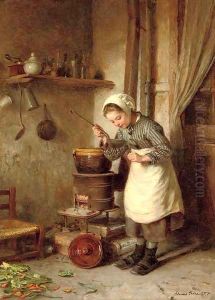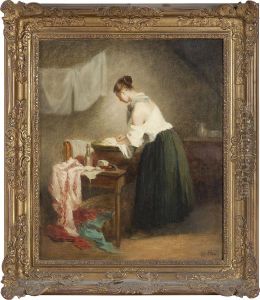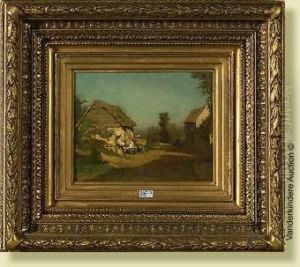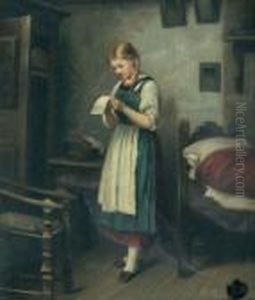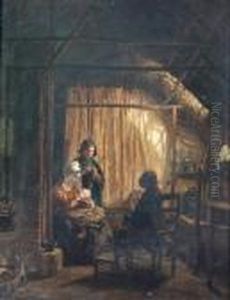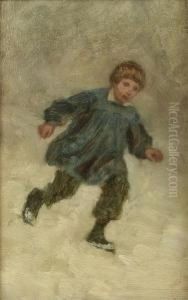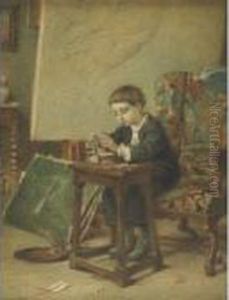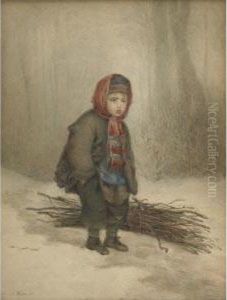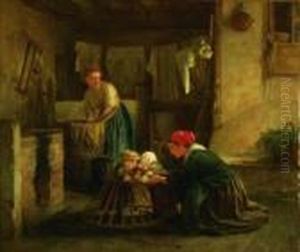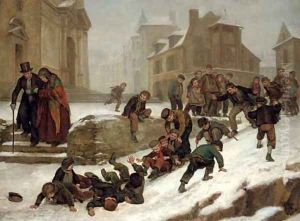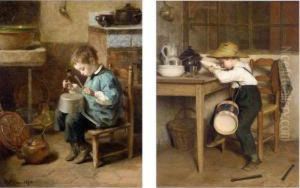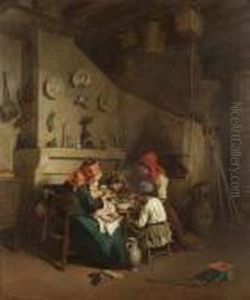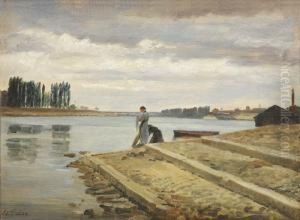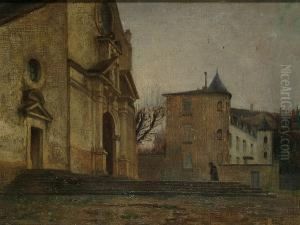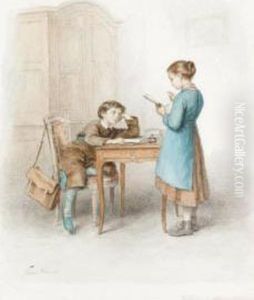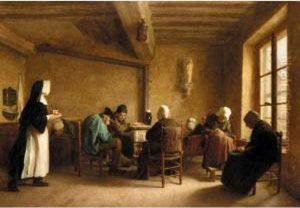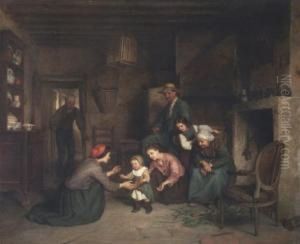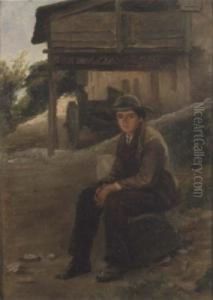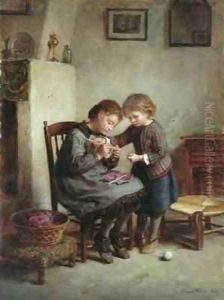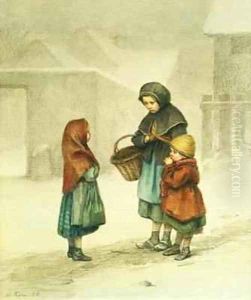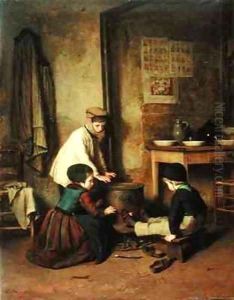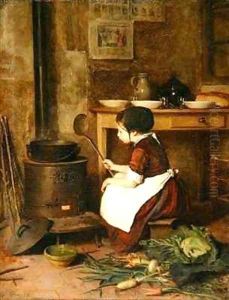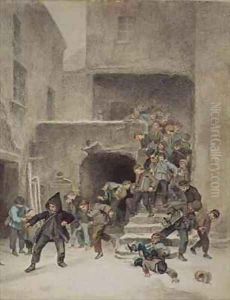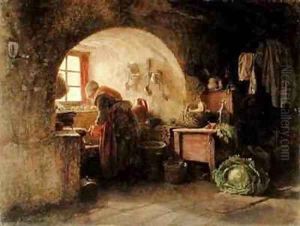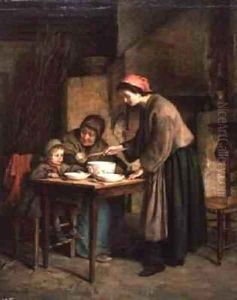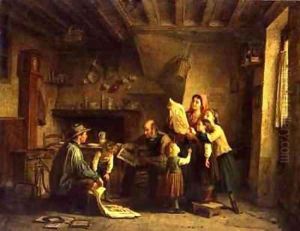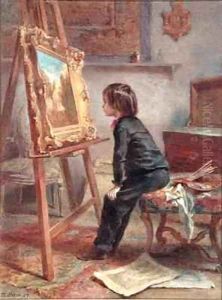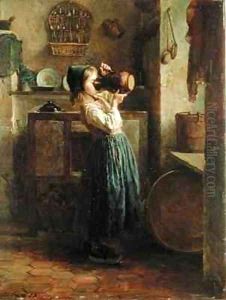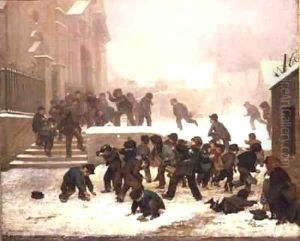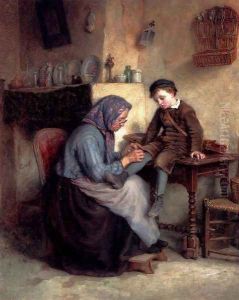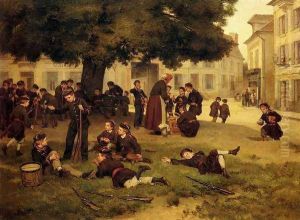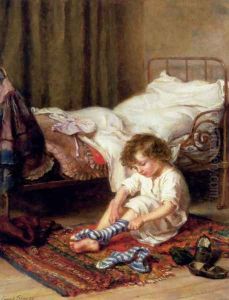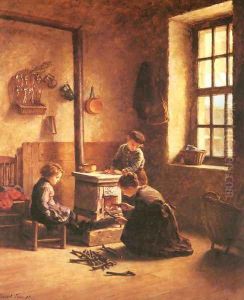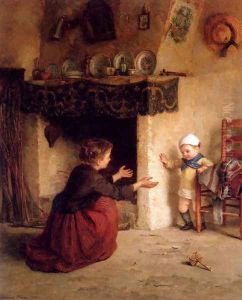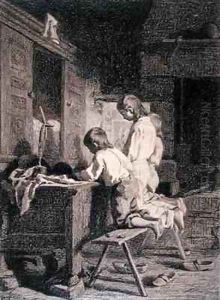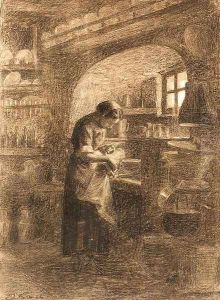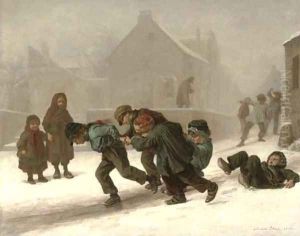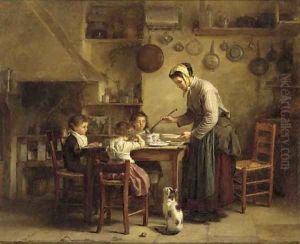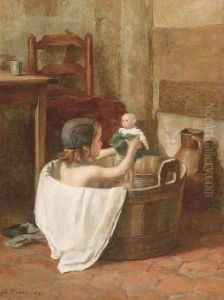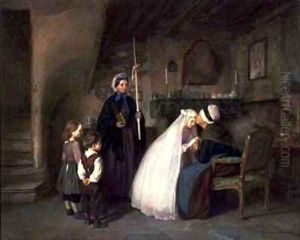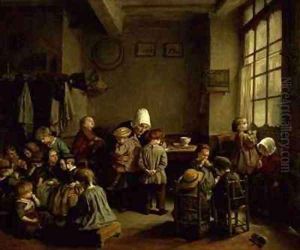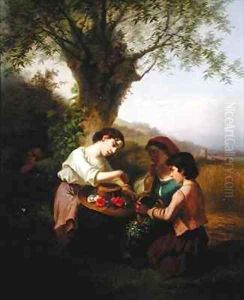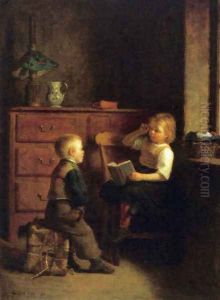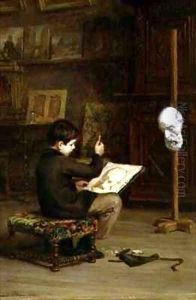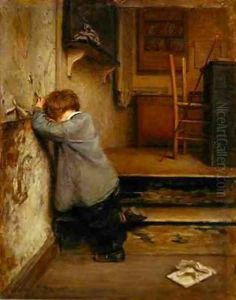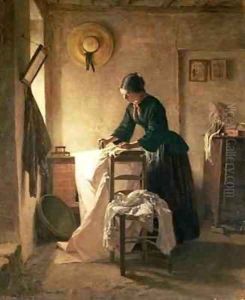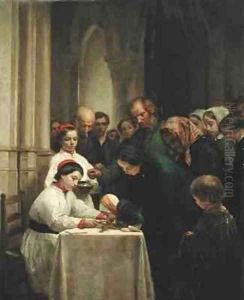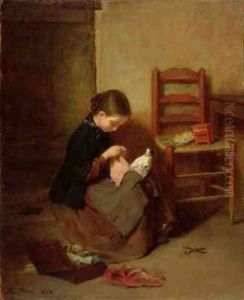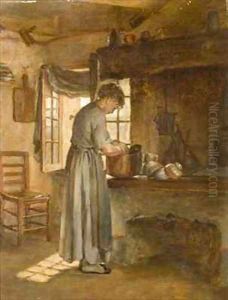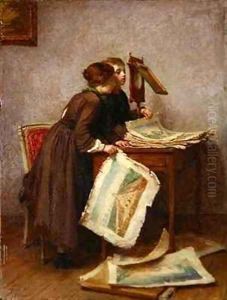Edouard Frere Paintings
Édouard Frère, born Charles Édouard Frère on January 10, 1819, in Paris, France, was a prominent 19th-century French painter known for his intimate depictions of French rural and domestic life. Frère's work is often associated with the Barbizon school, a movement that emphasized natural landscapes and scenes of peasant life, although his primary focus was on the more tender and detailed portrayal of children and family life within domestic settings.
Frère's journey into the arts began under the guidance of his brother, Pierre Edouard Frère, who was also an artist. He further honed his skills at the École des Beaux-Arts in Paris, where he studied under Paul Delaroche, a distinguished painter of the time. Despite the prevailing popularity of historical and mythological subjects among his contemporaries, Frère chose to focus on the everyday life of ordinary people, a theme that would define his career.
Throughout the 1840s and 1850s, Frère exhibited his works at the Paris Salon, the premier art exhibition in France, receiving considerable acclaim. His paintings, characterized by their fine detail, warm colors, and empathetic portrayal of his subjects, captured the hearts of the public and critics alike. He depicted scenes of peasant children playing, family gatherings, and rural labors with a realism and sincerity that resonated with viewers, earning him a respected place among genre painters of his time.
Frère's influence extended beyond France. His works were particularly well-received in England and the United States, where they not only enjoyed popular success but also influenced domestic genre painting in these countries. Despite the changing tides of artistic fashion, including the rise of Impressionism towards the end of his career, Frère remained committed to his artistic vision, continuing to produce work that celebrated the simplicity and beauty of everyday life.
Édouard Frère passed away on May 3, 1886, in Écouen, a small commune in the suburbs of Paris where he had lived and worked for much of his life. Today, his paintings are held in numerous prestigious collections worldwide, including the Musée d'Orsay in Paris and the Metropolitan Museum of Art in New York, serving as enduring reminders of the universal appeal of domestic tranquility and familial bonds.
